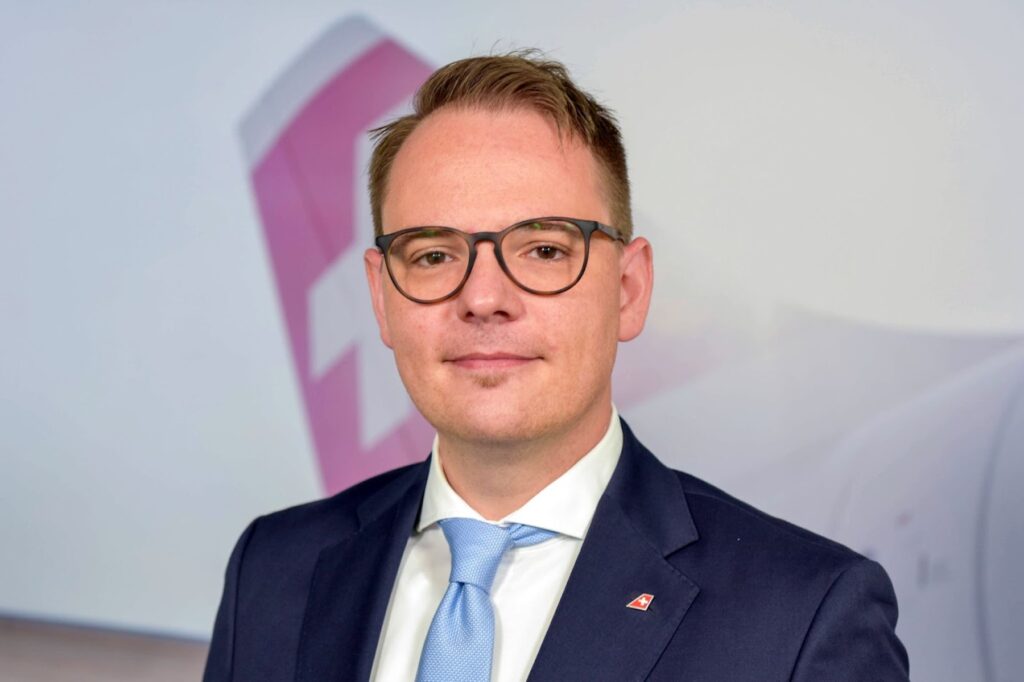Professor Paul Ingram doesn’t just teach leadership; as Kravis Professor of Business and faculty director of the Advanced Management Program at Columbia Business School Executive Education, he’s a daily practitioner in the field. With a background in sociology supplementing his academic work in business and management, Ingram understands the qualities that distinguish excellent leaders.
Ingram’s expertise covers a broad range of leadership and management fields, including regulatory effectiveness, social networks and their interactions with the culture at large, crisis management, and the need to diversify the workplace. He has won numerous awards for his teaching and writing and consults with businesses across industries on matters involving leadership, organizational design, strategy, and company culture.
We spoke with Ingram about several of his areas of expertise. Here’s what Advanced Management Program participants can expect to derive from Ingram’s teaching — and the program as a whole.
What makes effective crisis managers? Do they share specific traits or behaviors?
Success in a crisis depends on behaving in a grounded, present way. That results from three forms of preparation.
First, leaders who succeed in a crisis are focused on the ultimate ends and keep others focused. They do that by developing and maintaining a strategy, which involves clear priorities. In a crisis, the means to ends may shift very quickly. The key success factor is to have clarity around those ends. I recently invited the medical director of one of Singapore’s big hospitals to address my class — he was an Advanced Management Program graduate, by the way. He explained how he used a military principle called Commander’s Intent to manage the COVID crisis. Leadership offers key priorities, then provides subordinates the autonomy to do what is needed to achieve those priorities. His job was to provide focus to facilitate clear, simple, effective strategies.
Second, leaders remain present, which requires that they know their values. Another Advanced Management Program graduate who addresses my class every year led the US military’s humanitarian aid effort following the 2011 Japanese tsunami. He talks about some difficult decisions he had to make involving conflicts between the law and saving lives. He explains that he could act in the moment because he had a clear idea of his values, the Navy’s values, and America’s values. Then he takes from his wallet a card listing his values, which he created in my class. He’s carried it for more than 10 years.
Third, effective crisis leaders build spontaneous, collaborative forces for information. That’s a result of investments in what we call social capital, building relationships over their entire career. They might not call on these resources for years, but it turns out that at the moment of crisis they need information or resources that they never foresaw. There’s no way to build those kinds of information supply lines with some kind of foresight. You just have cast a wide net. That strengthens your capacity to respond to unpredictable situations.
Therefore, strategy, values, and social capital. Those are the behaviors that support or focus presence and the capacity to build teams and coalitions in unforeseen circumstances.
In one of your lectures on crisis management, you quote Dwight Eisenhower, who said, “Plans are worthless, but planning is everything.”
This relates to improvisation, which may be the fourth element. You need to improvise in a crisis, and the investment that allows you to improvise is planning. Even a robust set of plans can never be sufficient for a crisis. Nobody could have that kind of foresight, and you have to have the humility to realize that.
Sometimes people say, “Well, if you’ll never have a plan that fits a crisis, why bother planning?” Well, planning gives you the raw materials to improvise. When you plan, you understand your resources — including your human resources — and you practice certain pieces of responses that can be decomposed and built up into a new structure.
Practice gives you the capacity to respond to the unforeseen. In the Advanced Management Program, we study jazz as an organizational form and we interact with jazz musicians. The first time someone sees what they do, if they’re naive to the art form, they say, “Oh, they’ve practiced this.” And then the musicians tell them, “We’ve never played this piece together before” or “We’ve never played together before.” And then they say, “Oh, it’s magical; they have some kind of capacity that the rest of us can’t mimic.” Then they find out that what they actually have is a great mastery of a set of elements and a humility to be able and willing to recompose those in interaction with others without a set plan. They practice for thousands and thousands of hours alone. They practice collaboration, but they never try to do the same thing twice. They would view it as a real failure if they ever did the same thing twice.
Practice and planning are part of improvisation. You have to understand that the end product of improvisation is novel and flexible, which is also true in a crisis. Planning gives you the raw materials for improvisation, but you have to have humility because you may be overly confident in your planning if you don’t.
The Advanced Management Program graduate I mentioned from the US Navy had taken his team of thousands of employees through simulations and contingency plans around a nuclear disaster, around a tsunami, and around an earthquake. They had never anticipated that they would be visited by all three at the same time. That’s the definition of a crisis — it’s unforeseen. So, they couldn’t go to the shelf and say, “Here’s what we do for the simultaneous occurrence of a nuclear disaster, a tsunami, and an earthquake.” However, they had these pieces that they practiced, and they could build something new out of those pieces.
You’ve done a lot of work in the ways leaders establish and project authenticity. Is it possible to fake authenticity?
There’s a lot of training around faking listening, which is sad because listening is a big driver of effective leadership. It correlates strongly to many positive leadership outcomes. But, no, you can’t fake authenticity.
Authenticity is critical. The concept has a lot of legitimacy among experienced leaders. When you get to an audience like the Advanced Management Program, you don’t have to sell authenticity. With experienced leaders, there’s no cynicism around the concept of authenticity.
You’ve addressed the importance of authenticity, but what about best practices? How can leaders project and communicate authenticity?
First, we need to define authenticity, which is a fuzzy word. The definition that most people endorse is that somebody is authentic when their behaviors and their values are aligned. That requires clarity around your values.
In my teaching and research around authenticity, I help people identify their most significant values and keep them top of mind. I think that’s the best we can offer. Participants in the Advanced Management Program leave with a wallet card that represents their top values. I had a visitor in my class a couple of weeks ago, an alum of the Advanced Management Program who runs a Fortune 500 company. He still has that card in his wallet, a decade or more after completing the program.
How about communicating values? Stories about pivotal moments in your life often provide an effective vehicle for communicating values. Stories are an honest way to communicate. People can tell whether a story is true and moving to the storyteller. If the story is important to you, it’s because it represents your values. We help leaders reflect on their development — not only professional development but everything from childhood on — and identify key moments that help express who they are. Again, knowing your values goes a long way.
We experimented with experienced leaders. We had them deliver a speech to the people they were leading. In the experimental condition, we asked them to write their speech and deliver it. We issued the same instructions in the controlled condition, but we also presented them with their representation of their values: their values card. We said, “These are your values. You don’t have to respond to them, but keep them in mind when you’re writing your speech.” That was the variable; in all other ways, both groups completed the identical task. We had the speeches evaluated by peers and also by professional communication coaches. Those cued to their values — even if they didn’t mention their values in their speech — were viewed as more authentic and trustworthy. There’s some kind of a halo that others can perceive if you are grounded in your values.
Over time, I’ve grown more convinced that you don’t have to be that artful when it comes to values. People want to know that you’re grounded in values, and they want to know what those values are. If you’re transparent and invite them to that discussion, and if you’re genuine, they jump at the opportunity.
You recently published an article that focuses on social class, a demographic often overlooked in diversity policy. Why don’t we pay more attention to social class in diversity matters, and why is that a mistake?
It’s a mistake because the failure to include any group of qualified people is a waste of human resources. In that article, I calculated that without discrimination against people from lower social class backgrounds for managerial roles, we would add one-third to our total set of capable managers. That’s no small benefit. Capable managers matter for economic growth, innovation, customer service, effective vaccination — we can go on and on.
There are also matters of justice and fairness. Those conversations might be more complicated and more dependent on the perspective of the individual. However, I’ve never encountered anybody who believes it makes sense to leave untapped resources on the table.
Every country on the globe demonstrates some kind of discrimination against people from lower-class backgrounds. The places where that discrimination is less have higher economic productivity, higher GDP per capita. All forms of economic discrimination exact an economic cost.
This isn’t about dividing a fixed pie. I think that this is what we call an “integrated solution.” It makes the pie bigger. We have really capable people, and we’re not taking advantage of their capabilities. It’d be good for them if they had positions where they could leverage their capabilities, but it would be good for us, too, as owners of the organization and stakeholders, as customers, and as users of technology and innovation. My point is that we think about divvying up positions in the economy as a fixed pie. That’s fundamentally wrong. We should think about it as a kind of opportunity to make everybody better off.
Overall evidence suggests that people from lower social-class backgrounds are equally capable managers, and in some circumstances better than the managers we currently have. Uber improved their technology for attracting drivers after recruiting a more socially and economically diverse set of participants on the design teams. As a result, they learned how important it was to drivers to get paid at the end of a shift as opposed to the end of the week.
What steps can employers take to ensure greater diversity in social class?
The first thing to do is something we do for other groups we’re trying to include, which is to measure.
There’s extremely compelling evidence about what has worked to improve the inclusion of women and minorities among leadership ranks. It indicates that the policies we often favor, which some might think of as forcing inclusion — mandatory bias training quotas and things like that — have often had the opposite of their intended effect.
What has worked? Joint problem-solving. You begin the conversation by saying, “We’ve got this resource that will benefit our organization and our customers. How do we make better use of it?” We gather a committee of capable managers and have them figure out what will work in their specific instance. Treat it as a joint goal and apply your problem-solving abilities to achieve it.
I would be against a heavy-handed approach to promote inclusion on the basis of social class for all the same reasons. What do I think would work? Measurement would help, as it does with members of other underrepresented groups. I’ve had CEOs say to me, “OK, but you can’t measure social class.” But the truth is, we do it all the time. I’m a sociologist by training; we’re in the business of measuring social class. You know we could argue about whether it’s perfect, but there’s also ambiguity around measures of race and gender.
Spotify recently added this question to their annual engagement survey: “Do you have a parent or guardian who has had a college education?” That’s a clean, simple measure you could use.
Second, we need to take a close look at structural and decision principles that are inherently biased. Take job requirements, for example. A number of organizations in the UK, including professional service firms, have retreated from the idea that you need a college degree to qualify for a job as, say, an accountant. They’ve concluded that different paths make you as likely to pass the exams to become a chartered accountant.
In the US, we’ve had real creep in terms of the educational qualifications we attach to jobs. We insist applicants have college degrees for jobs in which most currently successful people do not have college degrees. I’m not against education and training — I’m in that business. Still, let’s not attach qualifications that aren’t strongly correlated with the capacity to do a job.
You’re seeing a big development of certification programs now. These are happening in tech, especially. I think it’s a positive thing to give people skills in ways other than a four-year college degree and for organizations to recognize that as well. That’s another way to promote social class diversity in the workplace.
Columbia Business School Executive Education’s Advanced Management Program provides senior executives with the skills and knowledge to become transformational leaders. Its unique 22-week structure enables participants to learn, apply what they learn in their professional lives, and return to the virtual classroom to discuss and refine their learning. Interactive modules, one-on-one coaching sessions, access to a world-class alumni network, and engagement with faculty leaders in leadership, strategy, marketing, finance, and investment make Columbia’s Advanced Management Program a standout offering in the field of executive education. Would your career benefit from the Columbia advantage? Apply today.



